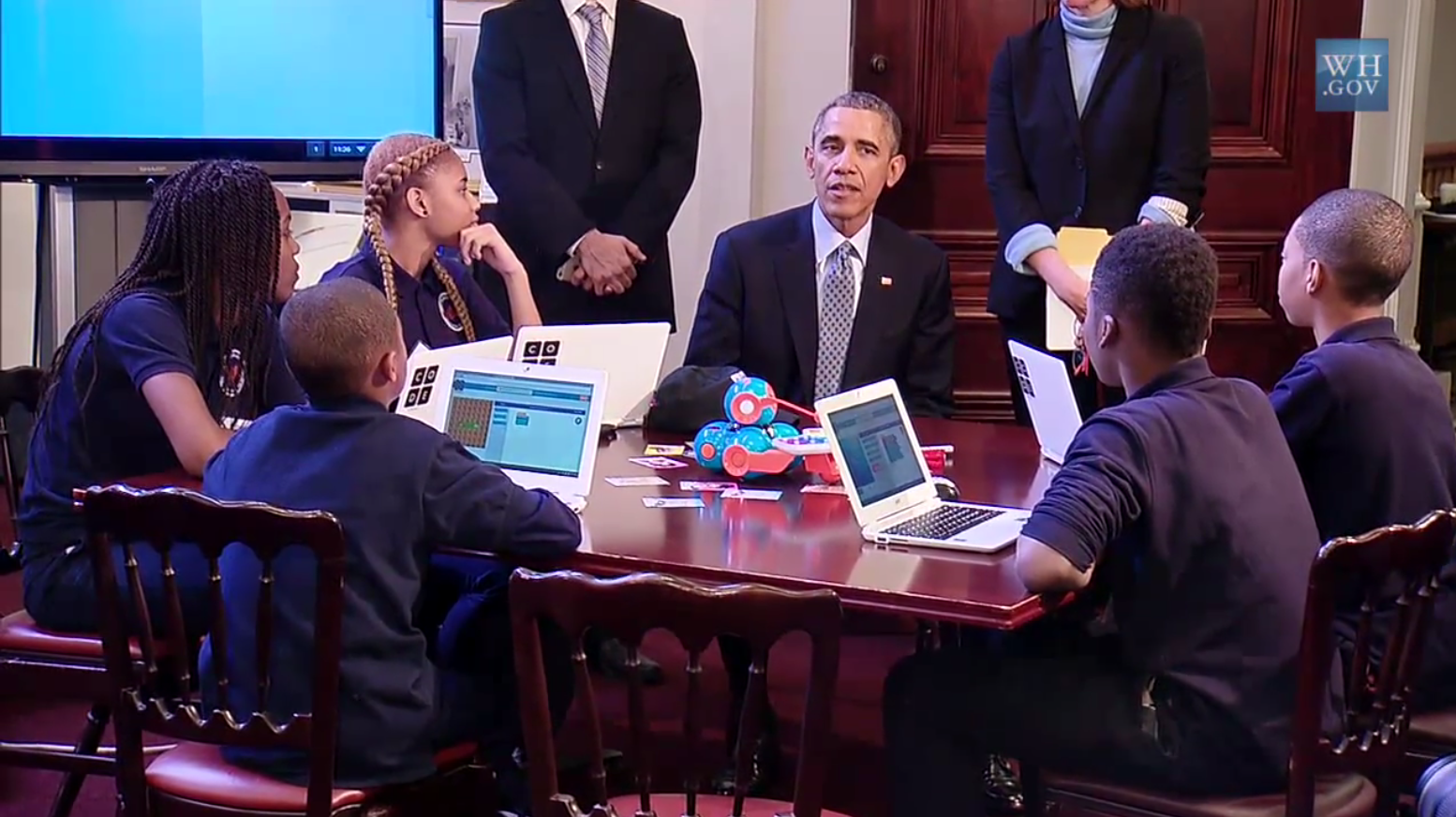New White House Initiative Proposes $4 Billion to Fund Computer Science Education

President Obama recently announced his plans for Computer Science for All, an initiative for students at K-12 schools “to learn computer science and be equipped with the computational thinking skills they need to be creators in the digital economy, not just consumers, and to be active citizens in our technology-driven world.” The CS for All initiative would bring $4 billion in funding for states, giving school districts access to materials, regional partnerships, and CS opportunities.
Currently, an estimated quarter of K-12 schools offer some kind of CS course, and 28 states count CS courses as credit towards graduation. CS for All builds on many existing initiatives and programs to expand CS education and brings in other groups like Cartoon Network, Google, and Salesforce.org, who are investing more than $60 million. The initiatives also extends to educators, giving them opportunities to develop their CS skills (Code.org plans to offer training to an additional 25,000 teachers this year) and resources to bring programs to their schools.
When we talk about gender and race in STEM, it’s important to talk not only about diversity within a company but also the ways that early education has a huge impact on discouraging many from pursuing a STEM track, which the initiative wants to combat:
Wide disparities exist even for those who do have access to these courses. In addition to course access challenge, media portrayals, classroom curriculum materials, unconscious bias and widely-held stereotypes exacerbate the problem and discourage many of our students from taking these courses. For example, in 2015, only 22 percent of students taking the AP Computer Science exam were girls, and only 13 percent were African-American or Latino students. These statistics mirror the current makeup of some of America’s largest and more innovative tech firms in which women compose less than one-third of their technical employees, and African-Americans less than 3 percent. We can do better!
CS for All seems like a positive step for everyone, especially for underrepresented students. The post on WhiteHouse.gov points out that “there were more than 600,000 high-paying tech jobs across the United States that were unfilled” and it’s estimated that “by 2018, 51 percent of all STEM jobs are projected to be in computer science-related fields.” As the economy shifts, it only makes sense that the curriculum and programs we teach in schools do as well. (I assume that the typing class that used floppy disks I had in middle school is completely outdated now.)
If you want to learn more about CS for All or get involved you can check it out here!
(via Code.org, Image via The White House)
—Please make note of The Mary Sue’s general comment policy.—
Do you follow The Mary Sue on Twitter, Facebook, Tumblr, Pinterest, & Google +?
Have a tip we should know? tips@themarysue.com
